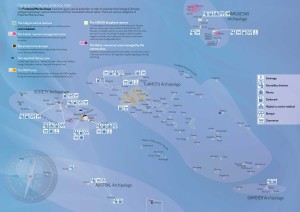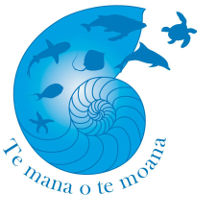Protected marine area
Respect to protect
Due to an exceptional marine environment, French Polynesia has implemented many protected marine areas in its whole marine space. Even if good habits based on respect and attention prevail during your entire stay, fishing, diving, sailing and anchoring activities are specifically regulated in these areas.

Marquesas archipelago
Vaitahu education marine area, Tahuata
The first “educational marine area“ (EMA) is in Polynesia! In the wake of the work done with schools during the “Pakaihi i te Moana“ oceanographic campaign, which was conducted in the Marquesas in 2012, students from the Vaitahu primary school in Tahuata decided to create their own marine protected area, in partnership with the commune, Polynesia services and the Agency for Protected Marine Areas.
The coastal area bordering their island indeed has a special natural marine heritage, with the presence of numerous marine mammals, manta rays and the existence of growing coral reefs, which are a unique phenomenon in the Marquesas. This bay also has a remarkable story.
The purpose of the EMA is not only to inspire learning about the sea, but also to welcome teachers, researchers, fishermen and holders of traditional knowledge related to the ocean. In addition, this “educational marine area” constitutes a true eco-citizen approach since it institutes the “children’s parliament of the sea“, a governing body for the management of Tahuata’s bay and its coastal areas.
Following this first experience, educational marine areas have been created on the other 5 inhabited Marquesan islands, each one managed by a primary education class. Please get informed about the mooring conditions from each island’s townhall.
Rules of good behaviour
PGEMs (namely protected areas) In the lagoon, speed is limited to 20 knots 70m from the coasts.
Anchor on sandy bottom. Never on coral. Ecological mooring buoys are available in Tahiti, Moorea and Bora Bora. Use existing mooring areas.
It is strictly forbidden to drain your holding tanks in the lagoon.
Sort your waste and leave it in garbage cans on land and in indicated sites.
Toilets must be equipped with a nonpolluting systems and biodegradable detergents.
Avoid touching the fauna and flora. Observe and admire. Watch for keel strikes that damage coral.
Austral Islands:
On the 7 islands of the Australs Archipelago, only 5 are inhabited, and you can enter in Rurutu, Tubuai or Raivave. Each one is rich in archeological sites. Arts and crafts, agriculture and fishing are these islands’ main resources and the yachters are always welcome. The lagoons’ riches, the big marine biodiversity associated to the cultural heritage and to ancestral life styles help the Austral Archipelago to presently work on the creation of a large marine reserve, named “Rahui Nui no Tuha’a Pae“, which would become the world’s largest marine reserve.
More info on the PEW Polynésie Facebook page.
Find out more about AMPs and PGEMs
More info (in french):
Créée en 1999, l’IFRECOR (initiative française pour les récifs coralliens) agit pour la protection et la gestion durable des récifs coralliens et des écosystèmes associés (mangroves, herbiers) dans les collectivités françaises d’outre-mer www.ifrecor.com
www.environnement.pf



